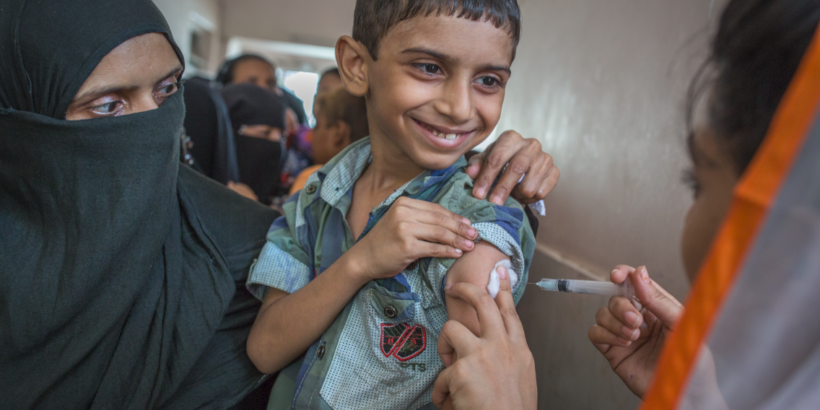Typhoid fever is a public health problem that is widespread in low- and middle-income countries and is responsible for a large burden of morbidity, particularly in young children and adolescents. Infections are treatable with antibiotics if diagnosed appropriately, but lack of access often precludes effective treatment, leading to further disease transmission and the spread of drug-resistant typhoid. A recently prequalified typhoid conjugate vaccine (TCV) is safe and effective and can be given to infants 6 months of age and older, as well as older children and adults, offering new hope in combating the spread of typhoid.
Our team, led by researchers at the Yale School of Public Health and the University of Antwerp, conducted a study published in The Lancet Infectious Diseases evaluating the cost-effectiveness of routine and campaign use of this vaccine in low- and middle-income countries with varying typhoid burdens. The analysis identified the most cost-effective vaccine strategy for each country, a factor that will help policymakers decide if it is strategic to apply for support from Gavi, the Vaccine Alliance to introduce TCV into the vaccination program in their country.
Vaccine cost-effectiveness analysis involves comparing alternative vaccination policy strategies (including the status quo of no typhoid vaccination) in terms of both their costs and health benefits. Previous studies suggested that routine vaccination coupled with a catch-up campaign is likely to be cost-effective in settings with high typhoid incidence. This study expands on those results by using updated data compiled from all available sources for a large number of countries, including those that are Gavi-eligible.
To analyze cost-effectiveness, we combined outputs from a model of typhoid transmission (considering both the protection that vaccines provide for the direct recipient as well as the “herd immunity” effects of vaccination for the community) with economic data on the costs of vaccination and treatment of typhoid. Using these modeling results, we were able to assess the potential benefits in terms of cases of typhoid and deaths averted as well as the net costs of various vaccination roll-out strategies. We compared three vaccine-delivery strategies to each other and to the status quo (no typhoid vaccination): (1) routine vaccination for infants at 9 months as part of the country’s EPI schedule; (2) routine vaccination at 9 months plus a catch-up campaign targeting children up to 5 years of age; and (3) routine vaccination plus a catch-up campaign targeting children up to age 15.
In general, vaccination is likely to be cost-effective in countries with high typhoid incidence, high cost of typhoid treatment, and/or high death rates from typhoid. The results indicate that it is always cost-effective to include a catch-up campaign when introducing routine typhoid vaccination. Cost effectiveness depends on what is known as the “willingness-to-pay” threshold, which needs to be determined by policymakers in each country. A range of these values was explored. We found that routine vaccination plus a catch-up campaign up to 15 years of age is the most cost-effective strategy in the majority of countries if the willingness to pay per DALY averted is at least US$200 or 25% of the country’s gross domestic product. Obtaining reliable estimates of the disease burden and other values that drive uncertainty in model results predictions—particularly, the probability of hospitalization for typhoid—is necessary for assessing the cost-effectiveness of vaccination strategies with more certainty.
The results from this study are helpful for policymakers to consider when deciding what the optimal vaccination strategies are for their country. Following on from this study, we are developing a tool for the Take on Typhoid website that will allow interested users to explore the cost-effectiveness results for individual countries. With this study and its accompanying tool, the research team hopes to create a pathway that will accelerate the decision-making process for typhoid vaccine delivery in low- and middle-income countries, thus facilitating access to vaccines for those in most need.
Read the full cost-effectiveness analysis here and an accompanying commentary here.



